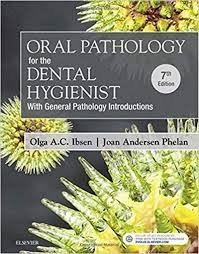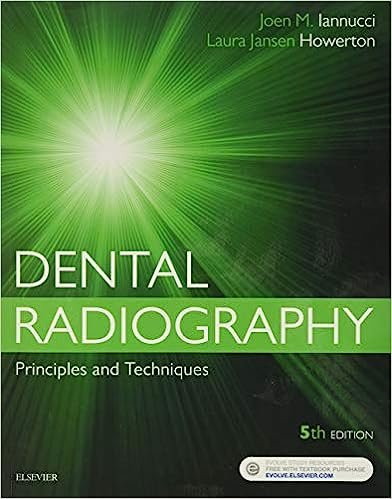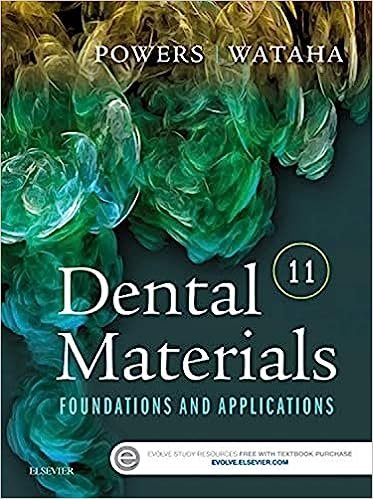Test Bank for Oral Pathology for the Dental Hygienist 7th Edition by Ibsen
Chapter 05: Developmental Disorders
Ibsen: Oral Pathology for the Dental Hygienist, 7th Edition
MULTIPLE CHOICE
- Which term describes a disorder present at and existing from the time of birth?
| a. | Anomaly |
| b. | Inherited |
| c. | Congenital |
| d. | Developmental |
ANS: C
A congenital disorder is present at and existing from the time of birth. An anomaly is a marked deviation from normal that can be the result of congenital or hereditary defects. Inherited disorders are caused by abnormalities in the genetic makeup transmitted from parent to offspring. Developmental disorders occur when failure or disturbances occur during the complex series of cell division, multiplication, or differentiation.
REF: Vocabulary, page 148 OBJ: 1
- Which term describes partial anodontia or the lack of one or more teeth?
| a. | Anodontia |
| b. | Ankylosed |
| c. | Hypodontia |
| d. | Gemination |
ANS: C
Hypodontia defines partial anodontia or the lack of one or more teeth. Anodontia is the congenital lack of teeth. Ankylosed teeth are those fused to alveolar bone, usually retained deciduous teeth. Gemination occurs when a single tooth germ attempts to divide, resulting in the incomplete formation of two teeth.
REF: Vocabulary, page 148 OBJ: 13
- Which epithelium-lined tract is a developmental anomaly located in the corners of the mouth?
| a. | Commissural lip pit |
| b. | Angular cheilitis |
| c. | Fistula |
| d. | Congenital lip pit |
ANS: A
Commissural lip pits are epithelium-lined blind tracts located in the corners of the mouth. Angular cheilitis is often caused by Candida organisms. It appears as erythema or fissuring at the labial commissures. A fistula is a drainage tract from an area of infection. A congenital lip pit occurs near the midline of the vermilion border of the lip, and it appears as a depression.
REF: Commisural Lip Pits, page 151 OBJ: 5
- The formation of dentin is termed
| a. | amelogenesis. |
| b. | dentinogenesis. |
| c. | dens in dente. |
| d. | odontogenesis. |
ANS: B
Dentinogenesis is the formation of dentin. Amelogenesis is the formation of enamel. Dens in dente is a developmental anomaly called a tooth within a tooth. Odontogenesis is tooth development in the human embryo.
REF: Teeth, page 151 OBJ: 4
- The first branchial arch divides into two maxillary processes and the _____ process.
| a. | mandibular |
| b. | frontal |
| c. | median nasal |
| d. | globular |
ANS: A
The first branchial arch divides into two maxillary processes and the mandibular process. The frontal process is a structure above the first branchial arch. The median nasal process develops from the frontal process. The globular process develops from the median nasal process.
REF: Face, page 149 OBJ: 4
- The body of the tongue develops from the
| a. | frontal process. |
| b. | first branchial arch. |
| c. | second branchial arch. |
| d. | third branchial arch. |
ANS: B
The body of the tongue develops from the first branchial arch. The frontal process is above the first branchial arch. The second and third branchial arches form the base of the tongue.
REF: Face, page 149 OBJ: 4
- Which term defines the joining of two adjacent teeth by cementum only?
| a. | Twinning |
| b. | Concrescence |
| c. | Cementogenesis |
| d. | Fusion |
ANS: B
Concrescence is the joining of two or more adjacent teeth by cementum. Twinning, or gemination, occurs when a single tooth germ begins to divide, resulting in the incomplete formation of two teeth. Cementogenesis is the formation of cementum. Fusion is the union of two adjacent tooth germs.
REF: Vocabulary, page 148 OBJ: 5
- Odontogenesis in the human embryo occurs at
| a. | 3 weeks. |
| b. | 5 weeks. |
| c. | 5 months. |
| d. | 1 month. |
ANS: B
Odontogenesis in the human embryo occurs at 5 weeks. The face begins proliferation and differentiation at 3 weeks. Formation of hard dental tissues begins at 5 months. There is no initial odontogenesis at 1 month in utero.
REF: Teeth, page 150 OBJ: 4
- This patient exhibits an extensive adhesion of the tongue to the floor of the mouth caused by the short lingual frenum. What condition is suspected?
| a. | Ankyloglossia |
| b. | Frenectomy |
| c. | Lingual thyroid |
| d. | Total ankyloglossia |
ANS: A
Ankyloglossia is an extensive adhesion of the tongue to the floor of the mouth caused by a short lingual frenum. A frenectomy is a surgical procedure performed to remove a portion of the lingual frenum in the treatment of ankyloglossia. Lingual thyroid is a smooth nodular mass at the base of the tongue posterior to the circumvallate papillae and near the midline. Total ankyloglossia rarely occurs.
REF: Ankyloglossia, page 151 OBJ: 6
- Clinically, the lingual thyroid nodule appears as a smooth nodular mass
| a. | at the base of the tongue posterior to the circumvallate papillae. |
| b. | on the anterior ventral tongue. |
| c. | on the lateral borders of the middle third of the tongue. |
| d. | anterior to the circumvallate papillae. |
ANS: A
Clinically the lingual thyroid nodule appears as a smooth nodular mass at the base of the tongue posterior to the circumvallate papillae. The lingual thyroid nodule is not found on the anterior ventral tongue. The lingual thyroid nodule is not found on the lateral borders of the middle third of the tongue. The lingual thyroid nodule is not found anterior to the circumvallate papillae.
REF: Lingual Thyroid, page 152 OBJ: 6










Reviews
There are no reviews yet.